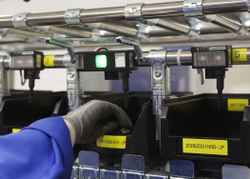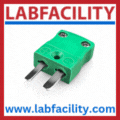
Posted to News on 17th Nov 2016, 17:43
Family miller first on the E-Pac case
A specialist miller and supplier of fine flours to the UK supermarkets has become the first company to put Pacepacker and Endoline's new E-Pac optimised case packing system to the test. Close cooperation between the two companies yielded a bespoke three-step case erecting, packing and sealing system that has eliminated manual handling on the flour packing line.

With an unstinting commitment to producing only the finest quality flour and intrepid enthusiasm for embracing new technology, the long-standing family miller was not afraid to try something new for its case packing operation. The company's production director explains: "We wanted a system to replace our labour intensive case packing operation, which involved laborious and strenuous manual handling."
With the old line, shrink-wrapped bundles of 10 × 1.5kg bags of flour were being packed by hand into cases. These cases were then manually transferred into a case sealer, an operation that required two operators.
However, when the company looked for an automatic system to carry out this task, their search drew a blank. Having worked with Pacepacker Services for several years, the miller felt confident in the team's ability to engineer a bespoke case loading design.
As always, Pacepacker's sales and design team worked collaboratively with the miller, consulting with operators and involving the entire production team to create a system that met all of their requirements.
The fully automated case packing line was based on the new E-Pac concept, born out of an alliance with Endoline Machinery. By combining Endoline's expertise in case erecting and sealing with Pacepacker's case packing know-how, the result is a full turnkey system that eliminates manual handling entirely.
Paul Wilkinson, business development manager at Pacepacker Services explains: "E-Pac brings together the combined experience of both companies to create a single source for fully automatic case packing systems. Usually, systems incorporating all three elements use components from different manufacturers bolted together by a third party. The benefit of our approach is that customers get guaranteed overall system performance, there is no issue about which company will provide ongoing technical support, and the line is built jointly by partners who are both specialists in their own equipment."
Two key challenges
From a design perspective, there were two key challenges with this project. When the packs emerged from the shrink-wrap tunnel, they were standing upright, but in order to go into the box, needed to be rotated 90 º. Secondly, the collations were physically too large to fit in the case.
Ian Merchant, the Pacepacker sales manager who led this project notes: "Loading flexible packs into a rigid case is always a challenge, whether bags of sugar, coffee, confectionery or flour. Gravity dictates that the contents will settle to the bottom, causing the bag to bulge out in its relaxed state. While an operator can press the sides of the bags to fit them in the case, a machine can't."
With thoughtful engineering, the system, designed by Pacepacker, solved both issues.
Shrink-wrapped collations of 1.5kg flour bags enter the case packing chamber, and once inside, undergo a two-step process that performs the necessary compression and rotation for the bags to be packed into cardboard cases formed by the Endoline 221 case erector.
First, pneumatically operated compression plates on the inside of the chamber compress the flour bags to a footprint that is smaller than the internal dimensions of the case. Next, the chamber rotates the compressed collation through 90 degrees and releases the pressure on the plates, allowing the collation to drop through flaps or "bomb doors' into the waiting case. This action causes self-cushioning air displacement, ensuring gentle passage into the case.
The opening of the bomb doors also serves to ensure the "major' flaps are moved out of the way, whilst two sets of fingers move the "minor' flaps into an over-centre position, so that they too are clear of the collation.
Once the flour is loaded into the case, the bomb doors close, the chamber returns to rest position and the fingers that held the minors move out of the way. The case exits the cell and is transferred into a lift conveyor onto the Endoline 702 case sealing system.
Ian explains: "Usually, we would use an incline conveyor to bridge a change in elevation, yet in this instance we were limited by production space. Instead, we designed a lift conveyor to transport the cases to the case sealer."
The line has been up and running since spring 2016, with the miller reporting that it has eliminated a potential source of injury and tedious operator task. In addition, the company, which produces in excess of 1000 tonnes of flour a week, is another step ahead of the competition when it comes to its packing prowess.
Go to www.pacepacker.com for more information about theE-Pac case packing system and other products.
X
X
GLOBAL






